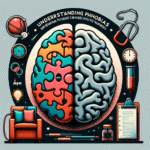
Introduction
In an era where data reigns supreme, the educational landscape is undergoing a transformative shift. Schools and universities are progressively harnessing data-driven decisions: using analytics to shape effective academic interventions. This shift is not just a trend; it’s a paradigm change that can significantly enhance student learning outcomes. With a myriad of data available—from test scores to attendance rates—educators are now equipped to tailor interventions that meet individual student needs.
Consider this: a student who struggles with math in their sophomore year may show signs of improvement when provided with targeted interventions based on comprehensive analytics. In this article, we will explore how data-driven decisions can guide educators in crafting effective academic interventions and ultimately foster a more personalized learning experience.
Understanding Data-Driven Decisions in Education
The Foundation of Data-Driven Decisions
Data-driven decision-making in education refers to the systematic use of data to inform and guide teaching practices, interventions, and strategic planning. By leveraging analytics, educators can identify patterns, track student progress, and personalize learning in a way that addresses specific needs.
What is Analytics in Education?
Analytics involves the collection, review, and analysis of data to make informed decisions. In the context of education, analytics can provide insights into various dimensions, such as student engagement, academic performance, and social-emotional factors.
The Role of Data in Shaping Academic Interventions
Types of Data Utilized
- Quantitative Data: Numerical data such as test scores, attendance rates, and grades.
- Qualitative Data: Descriptive feedback from student surveys, teacher observations, and interviews.
Each category of data can be dissected to paint a clearer picture of student performance and areas needing improvement. Educators must embrace both types to devise comprehensive strategies.
Bridging the Gap: How to Use Data Efficiently
Creating a Culture of Data Usage
Schools must prioritize a culture that encourages data literacy among educators. Professional development programs should focus on:
- Understanding data types and sources.
- Interpreting analytics results.
- Using data to inform teaching practices.
Implementing a Data-Driven Framework
A successful framework includes several components:
- Data Collection: Regularly gathering relevant metrics.
- Analysis: Utilizing tools to process the data, such as dashboards and software.
- Action: Implementing changes based on analytics insights and continuously revisiting strategies.
Case Studies: Real-World Applications of Data-Driven Decisions
Case Study 1: The Houston Independent School District (HISD)
HISD used data analytics to turn around its performance metrics through targeted interventions. By analyzing student results on state assessments, they identified a consistent trend where students struggled in specific subject areas—particularly reading.
Results
- A data dashboard was developed, allowing educators to access real-time performance metrics.
- Targeted reading programs were initiated based on the analytics insights.
- Within two years, reading proficiency scores improved by 15%.
Analysis: HISD’s implementation of a data dashboard fostered a proactive approach, allowing educators to make informed decisions tailored to the needs of their students.
Case Study 2: The University of Michigan’s Adaptive Learning Program
At the University of Michigan, an adaptive learning program analyzed student interactions to tailor educational materials. Performance data from quizzes and assignments guided adjustments in course content.
Results
- Students using the adaptive program achieved average scores 10% higher than those in traditional classes.
- Course completion rates improved by 20%.
Analysis: By employing data-driven decisions, the University of Michigan effectively personalized learning pathways, resulting in significant academic improvements.
Key Metrics to Monitor
Using insights from these case studies, some critical metrics that schools should monitor include:
| Metric | Importance |
|---|---|
| Student Engagement | Indicates interest and participation levels |
| Progress Monitoring | Tracks improvement or decline over time |
| Demographic Data | Understands diverse student needs |
| Intervention Effectiveness | Evaluates what works and what doesn’t |
The Benefits of Data-Driven Decisions
Personalized Learning experiences
When data informs teaching strategies, interventions can be tailored to meet diverse learning styles and needs. This personalization fosters a deeper engagement with the material.
Improved Resource Allocation
Data-driven decisions help schools allocate resources more effectively, ensuring that funding and staffing are focused on areas that need the most attention.
Enhanced Student Outcomes
When analytics guide interventions, students are more likely to achieve academic success. Tailored approaches can first pinpoint at-risk students and provide timely support.
Addressing Common Concerns
FAQ 1: What types of data should schools collect?
Schools should prioritize both quantitative data (test scores, attendance) and qualitative data (student feedback, teacher observations) for a comprehensive understanding of student needs.
FAQ 2: How do we ensure data privacy and security?
Implement strict data governance policies, ensure compliance with educational privacy regulations like FERPA, and educate staff on data security best practices to protect student information.
FAQ 3: What tools are available for data analytics?
Various tools exist for data analytics in education, including Tableau, Power BI, and specialized education platforms like Schoolzilla and BrightBytes.
FAQ 4: How can teachers be trained to use data effectively?
Provide ongoing professional development focusing on data literacy, interpretation, and the application of data in class instruction.
FAQ 5: What if a school lacks sufficient data?
Even with limited data, schools can start small by gathering available student performance metrics and teacher feedback, gradually expanding their data collection efforts.
Conclusion
In conclusion, data-driven decisions: using analytics to shape effective academic interventions offers a powerful framework for educators aiming to enhance student outcomes. As we’ve seen through case studies, embracing data can lead to tailored interventions, increased student engagement, and ultimately, higher academic achievement.
To thrive in this data-centric landscape, schools must cultivate a culture of data literacy, invest in smart tools for analytics, and commit to continuous improvement based on insights gathered. Educators equipped with data analytics are not just better prepared; they are empowered to inspire a new generation of learners.
As we step into this exciting future, let’s remember: it’s not just about collecting data but using it wisely to foster a brighter educational experience for every student.
This article encapsulates the essence of utilizing data effectively in education, drawing from real-world examples and emphasizing actionable insights. It maintains a proactive tone throughout, encouraging educators to embrace this transformative wave.

















